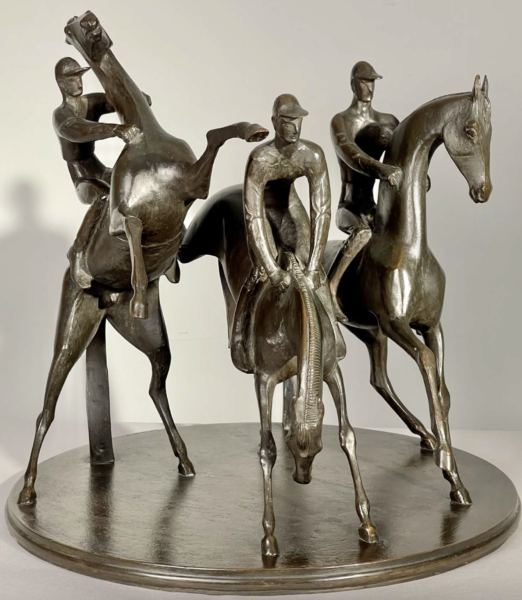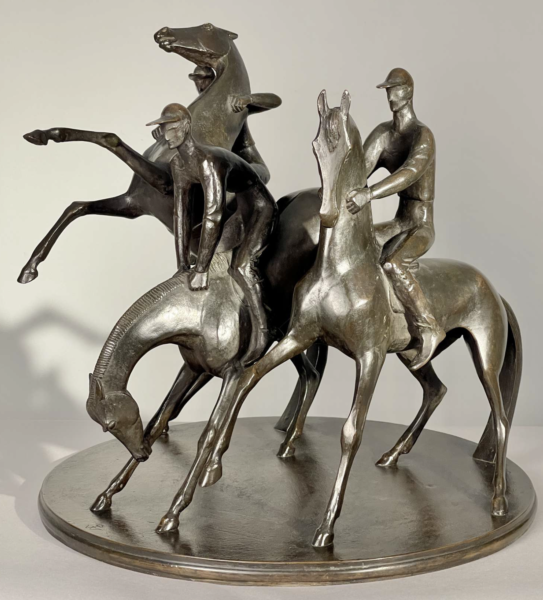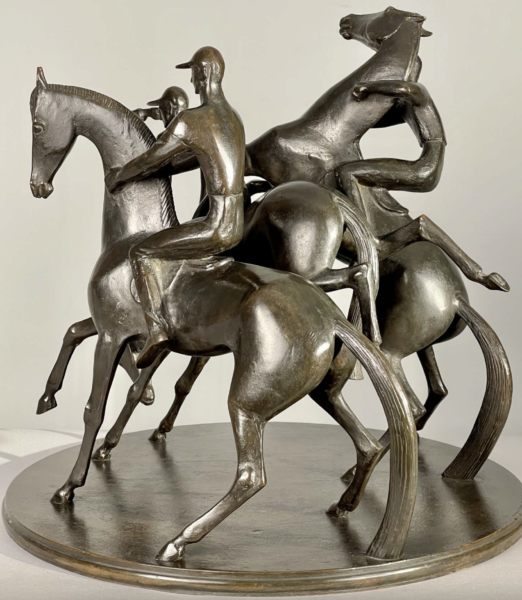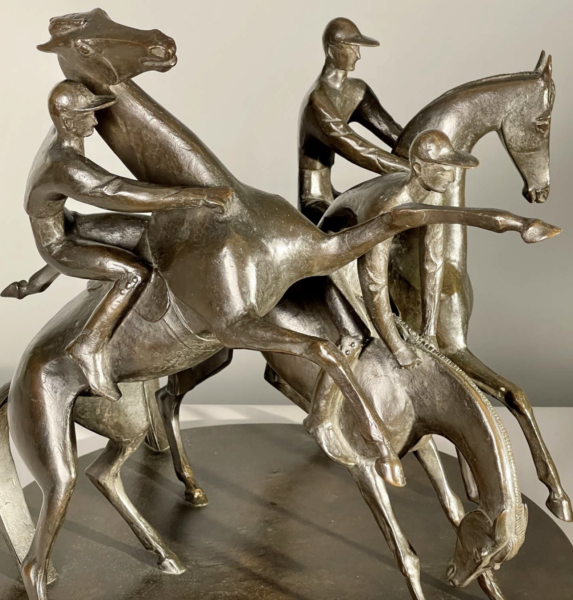The Jockeys, ca. 1920
Hunt DiederichBronze
18 1⁄2 × 20 × 20 inches
Signed on base with artist monogram: WHD
Inscribed on base: Roman Bronze Works N-Y-
The Jockeys is a fine period sand casting, executed circa 1920 at the Roman Bronze Works foundry, New York. This is possibly a unique casting in an edition of one, no other casting is known to exist. At least one example of the jockey and horse on the proper left of the composition is known to have been cast individually. Neither of the other two groups, in the center or right are known. The subject shows the tense and energetic moments just before the start of an early twentieth century era formal track race, the jockeys straining to hold their powerful mounts behind the starting line, awaiting the start.
Wilhelm Hunt Diederich was fascinated with zoomorphic figures, embracing Art Nouveau as he grew into his own as an artist. Diederich worked alongside Paul Manship at the Philadelphia Academy of Fine Art, who became a long lasting friend. From there, Diederich came to draw inspiration from the cut paper silhouettes of Folk Art, which he would translate into sculpture. Diederich’s sculpture in the round often has the same skillful interplay as his two-dimensional metal and paper silhouettes. His preference was for spirited action: polo players, jockeys, wrestlers, animals playing or struggling. Sculpture for Diederich was about being light and lineal, an effort of rhythmic contour and expressive silhouette. Growing up around horses in Hungary and working on a ranch in Wyoming, the artist had an affinity for animals that came out in his work.
Diederich is perhaps best known for his fine and remarkable decorative arts, which include fire screens, stair rails, weather-vanes, lamps, fountains, gates and other utilitarian objects.He received acclaim during his lifetime at the Paris Salon, the Whitney, the MoMA, and currently has work in the collections of the Metropolitan Museum of Art, the Art Institute of Chicago, Crystal Bridges, and many others. He also received commissions from the WPA for a number of public works during the Great Depression in the New York area.





